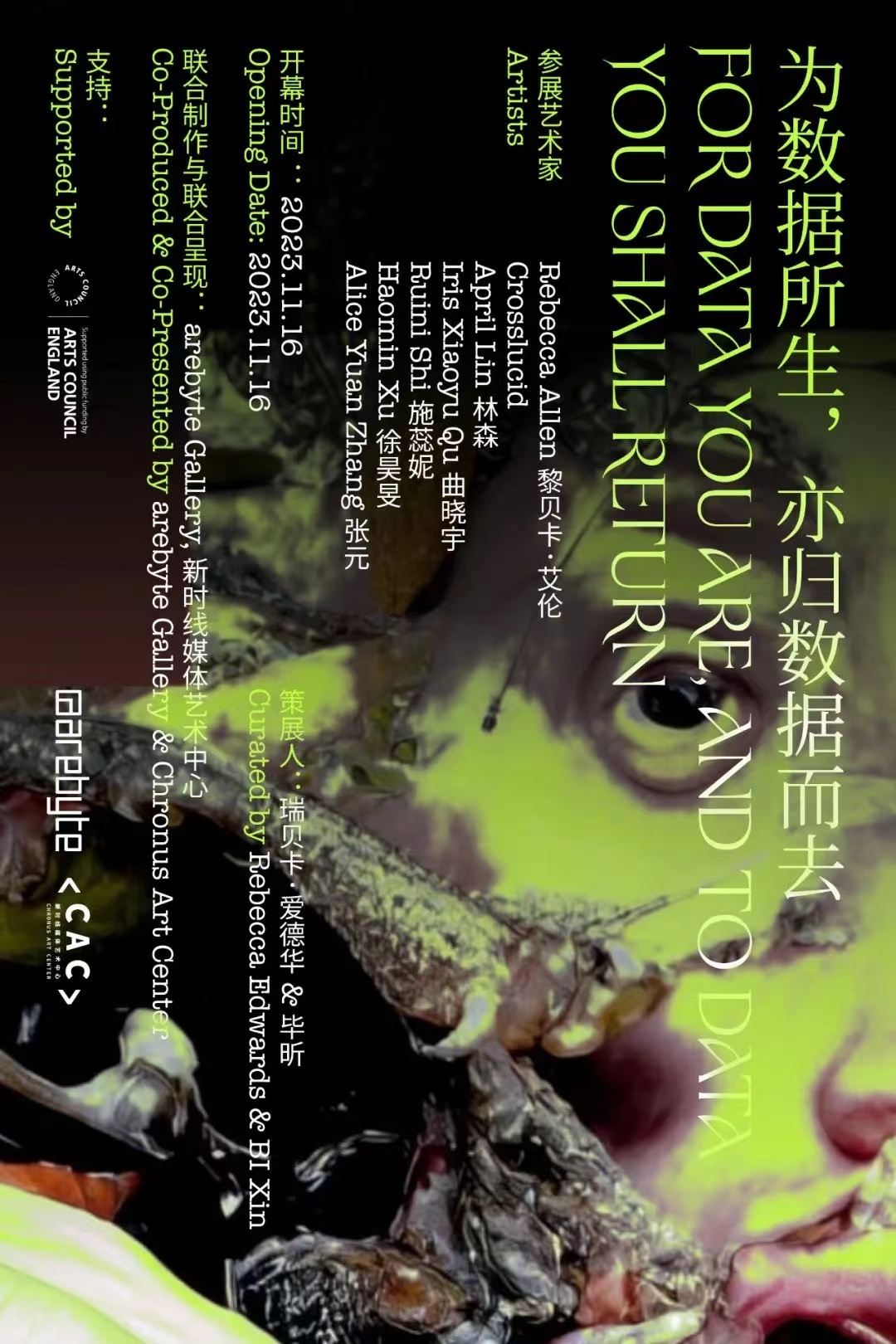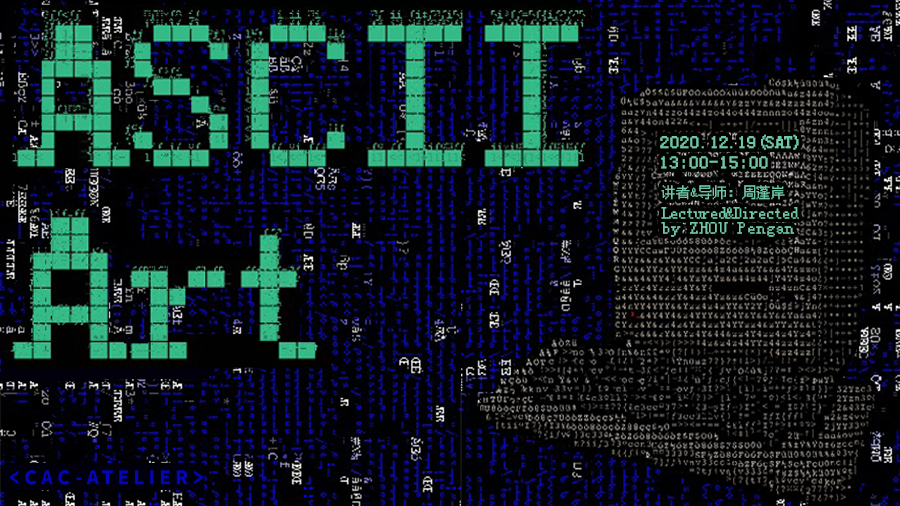Voice of Sisyphus|Slice
On View: 2015.6.21-7.19
Opening Reception: 2015.6.20, 5-7pm
Artist Talk: 2015.6.20, 3-4:30 pm
Venue: Chronus Art Center
Chronus Art Center (CAC) is pleased to present Voice of Sisyphus|Slice, an exhibition by the Hungarian born American artist George Legrady.
Voice of Sisyphus|Slice is composed of two works - Voice of Sisyphus and Slice that both integrate algorithmic processes as a means to data visualization and sonification by which new forms of aesthetic representations and socio-cultural narrative experiences are created. While the translation of sampled data from an image to sound in Voice of Sisyphusproposes and questions the potentiality of an aesthetic equivalence from one medium to another through simulated synaesthetic modeling, the transitional movement from a state of legibility of the photograph to an abstract and photographically unrecognizable state in Slice investigates into our perceptual experience of an image and examines the ways through which culturally identifiable meaning is constructed and could be deconstructed.The repetitive and cycling feature of both works easily bring to mind the Greek myth of king Sisyphus’ dilemma who was compelled to ceaselessly roll an immense boulder up a hill, only to watch it roll back down repeatedly, whereas their experimental nature with fluctuating parameter values provides variations within the constraints of their settings to allow for aesthetic breadth and constant fluidity of perceptual and aesthetic experience within the epic-cycle.
Voice of Sisyphus
2013 | George Legrady | Multimedia Installation
Image analysis – George Legrady
Audio and spatialization software development- Ryan McGee
Audio composition software development - Joshua Dickinson
Voice of Sisyphus is a multimedia projection with 4 channel spatialized sound installation in which a black and white image is sonified by a computer program which synthesizes image segments and produces sounds resulting in a continuously evolving composition.
Voice of Sisyphus is a time-based study of a single photograph, realized as a continuous performing audio-visual composition. It is presented as a multimedia installation with a large cinematic projection and 4 channel audio, spatializing sounds by speakers positioned in each of the four corners of the exhibition space. The sound composition is created out of the analysis of visual regions in the photograph through the sampling of pixel clusters as the software “reads” and translates areas of the image at 30 frames per second in four ways: 1) Stationary 2) Smooth scanning, 3) Rectangular divisions and 4) Regions of interest in the image such as faces, clusters of people, windows, glasses, lines, mirrors, plants, decorations, etc. within the image.
Voice of Sisyphus was exhibited at Edward Cella Gallery, Los Angeles (2011); Nature Morte Gallery, Berlin (2012); “Sights & Sound”, Beall Center for Art + Technology, UC Irvine (2013)
SLICE
2011| George Legrady | Custom software animation |3840 x 1080 pixels | Image dimensions variable
Visualization software - Yun Teng
Eight black and white and color tinted photographs of a formal social event are repeatedly sliced in half, until reduced to abstract visual slivers that are no longer photographically recognizable. Once arrived to that abstract state, the slices systematically re-assemble, doubling in size into a different image.
The sequence consists of eight images in total and each is color coded with one of four colors. This results in a situation where the viewer only perceives the color changes every second image. The transition between images of same color are hardly noticeable, whereas when the incoming different colors creates instant recognition for the viewer that ‘change is taking place.’ The software generates the visual animation in real-time cycling through the eight different images over the period of approximately 20 minutes.
This artwork is about the transition from one state to another - from a state of legibility when one recognizes photographic detail to a state of illegibility when the slices are so thin that the image is an abstraction, then followed with a return back to the perceptual identification of photographic detail.
The selected images for this work have a specific cultural identification reaching back to French Cinema of the 1960s such as the dramatically staged 1960’s film “L’Année dernière à Marienbad” by the new wave director Alain Resnais, and the French New Novel author Alain Robbe-Grillet. Another influence for this work are the writings of the Bulgarian/French linguist Tvestan Todorov who describes the transition from one state to another as the most basic form of narrative. There is also the OULIPO French writer Raymond Queneau whose “Exercise de styles” retells the same story multiple times but in different stylistic forms to explore how the process of retelling produces unexpected resonances in meaning.
About the Artist
George Legrady is Chair of the arts-engineering Media Arts & Technology PhD program at the University of California, Santa Barbara, director of the Experimental Visualization Lab, and professor of digital media in the College of Engineering and the College of Humanities and Fine Arts. He is an internationally published scholar and exhibiting media artist, a pioneer in the field of interactive digital media arts. His contribution to the field since the early 1990’s has been in creating digital media interactive installations based on a set of conceptual positions for intersecting cultural content with data processing. His current research engages with data visualization, robotic computational integrated photography, and digital visual ethnography. His computational based installations have been exhibited internationally in multiple venues from fine arts museums and galleries, alternative spaces, academic conferences, and public commissions. He has received awards from Creative Capital Foundation; the Daniel Langlois Foundation for the Arts, Science and Technology; the Canada Council; the National Endowment for the Arts, and the National Science Foundation.
Legrady’s work has been exhibited internationally in Hong Kong (2014); Sao Paolo, Brazil (2012); Vancouver Olympics (2010); Poznan, Poland (2010); Ahlers Foundation, Hannover, Germany (2008); Museum of Contemporary Art, Taipei (2007); the National Academy of Sciences, Washington DC (2007); Frankfurt Museum of Communication (2006); Telic Gallery, Los Angeles (2006), BlackBox 06 at ARCO, Madrid (2006), the Cornerhouse Gallery, Manchester (2005), Museum of Contemporary Art Kiasma, Helsinki, Finland (2004), Ars Electronica in Linz, Austria (2003), DEAF03, Rotterdam, Netherlands (2003), San Francisco Museum of Modern Art (2002), Centre Georges Pompidou (2001), with a retrospective exhibition at the National Gallery of Canada and the Canadian Museum of Contemporary Photography (1997).
He is represented in Los Angeles by the Edward Cella Gallery, and in Toronto by the Pari Nadimi Gallery. http://www.georgelegrady.com.
About the Series
Voice of Sisyphus | Slice is the third exhibition in a series of screen-based works organized by the Chronus Art Center. Conceived by ZHANG Ga, this exhibition series examines, through seven international artists’ projection works, each presented in a month-long solo exhibition, dynamically generated audiovisual systems that artists have custom-made, real-time transmitted images which demand protocols other than those readily available, idiosyncratic animation techniques for which given rules will be rewritten, and subject matters estranged from the populist safe haven. The artists presented in this series often exploit an algorithmic logic distinct from the predominant language that speaks the parlance of video art—software presets and editing routines for visual manipulation and content authoring—thereby disrupting and sabotaging the economy and the ideology of image production implicit in the very tools and means that produce narrative and construct meaning. In doing so, they have developed a new aesthetic sensibility beyond the received notion of video art as such, extending the rich tradition of media art seen in the pioneering experiments of Walter Ruttmann and Dziga Vertov of the 1920s; by the canonical works of Michael Snow, the Vasulkas and Nam June Paik, to name just a few, of the mid-century; to the digital contemporary, and opened new potentials for tending individuated perceptual spaces that can acculturate the spectacles of cosmic magnitude and the facticity of the everyday, imagined or otherwise.
Series Artists
Michael Joaquin Grey
Wolfgang Staehle
George Legrady
Marina Zurkow
Casey Reas
Jim Campbell
AL and AL
VEDIO:









